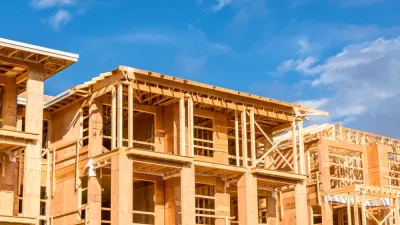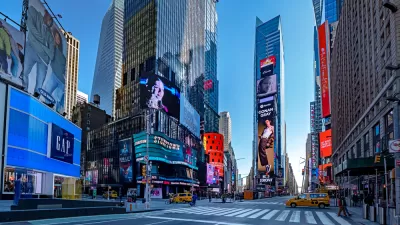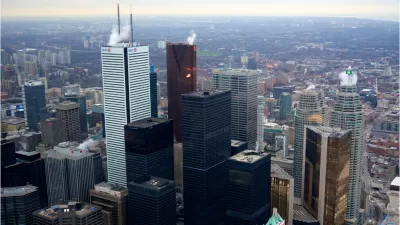Abbotsford is the fifth-largest city in British Columbia by population but the largest by land size. The city's most recent community plan is designed to accommodate new growth without sprawling any farther.

"Sprawling, lacking a downtown core and yet hemmed in by the very agricultural economy that has made it what it is, B.C.’s largest city by land mass is rethinking its future," according to an article by Jeff Lee.
The city recently finished public consultations on a new draft official community plan (OCP) [pdf] that would allow for new levels of density in the city. Brent Toderian, who also blogs for Planetizen, is working with the city on the plan.
The OCP calls for four new “urban centres” around the old downtown, the University of the Fraser Valley and at the South Fraser Way intersections of McCallum and Clearbrook. Of the 60,000 new residents anticipated, 45,000 will be in the urban core and surrounding neighbourhoods. The remaining 15,000 will be in new neighbourhoods developed within the urban boundaries.
Lee includes a lot of details about the unique planning and land use case study presented by Abbotsford, which includes assets like a large airport, a strong agricultural industry, and a diverse population.
FULL STORY: Abbotsford rethinks its future

Americans May Be Stuck — But Why?
Americans are moving a lot less than they once did, and that is a problem. While Yoni Applebaum, in his highly-publicized article Stuck, gets the reasons badly wrong, it's still important to ask: why are we moving so much less than before?

Using Old Oil and Gas Wells for Green Energy Storage
Penn State researchers have found that repurposing abandoned oil and gas wells for geothermal-assisted compressed-air energy storage can boost efficiency, reduce environmental risks, and support clean energy and job transitions.

Placekeeping: Setting a New Precedent for City Planners
How a preservation-based approach to redevelopment and urban design can prevent displacement and honor legacy communities.

San Francisco’s Muni Ridership Grew in 2024
The system saw its highest ridership since before the Covid-19 pandemic, but faces a severe budget shortage in the coming year.

Colorado Lawmakers Move to Protect BRT Funding
In the face of potential federal funding cuts, CDOT leaders reasserted their commitment to planned bus rapid transit projects.

Safe Streets Funding in Jeopardy
The Trump administration is specifically targeting bike infrastructure and other road safety projects in its funding cuts.
Urban Design for Planners 1: Software Tools
This six-course series explores essential urban design concepts using open source software and equips planners with the tools they need to participate fully in the urban design process.
Planning for Universal Design
Learn the tools for implementing Universal Design in planning regulations.
Heyer Gruel & Associates PA
City of Moreno Valley
Institute for Housing and Urban Development Studies (IHS)
City of Grandview
Harvard GSD Executive Education
Salt Lake City
NYU Wagner Graduate School of Public Service
City of Cambridge, Maryland





























